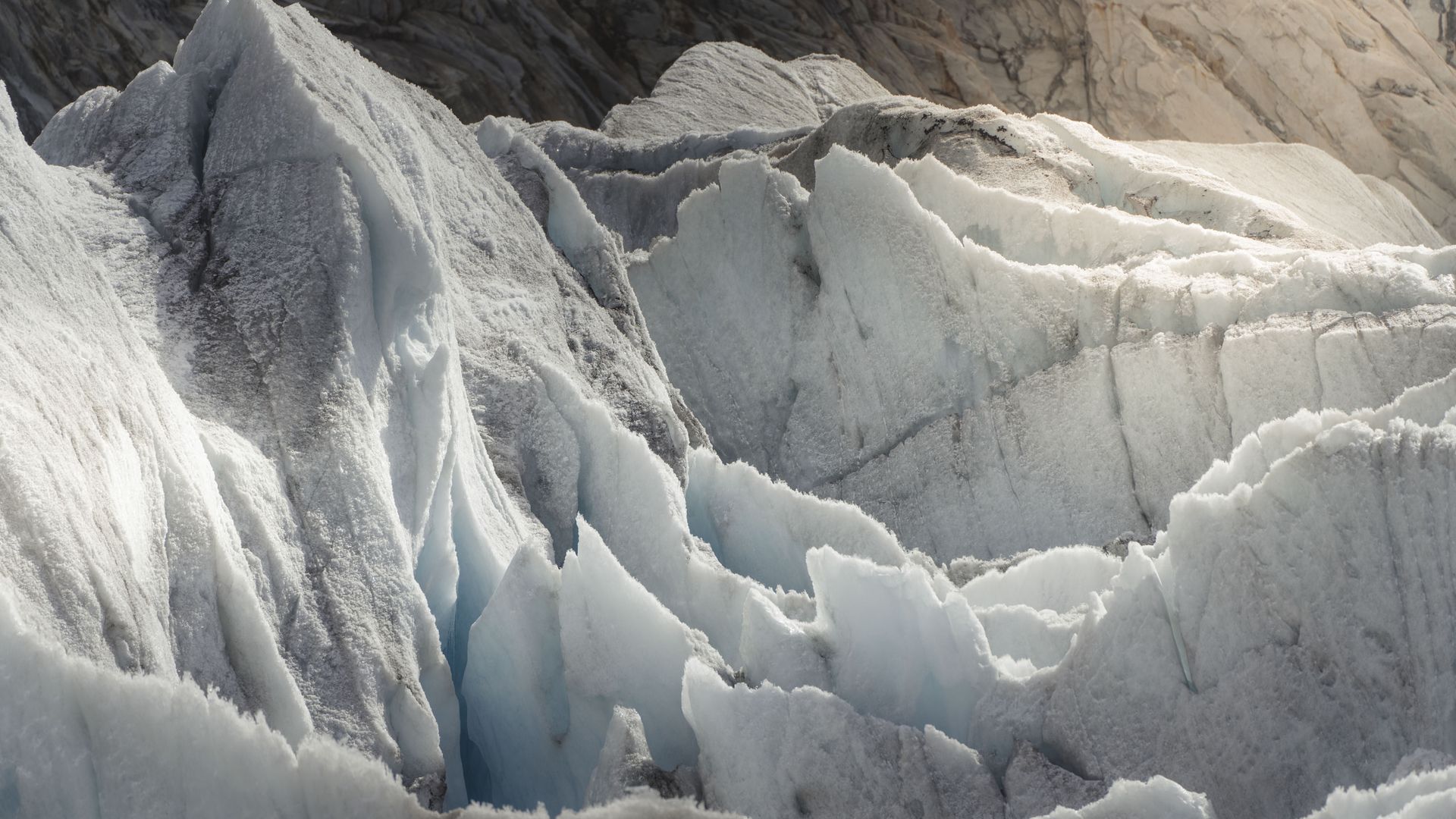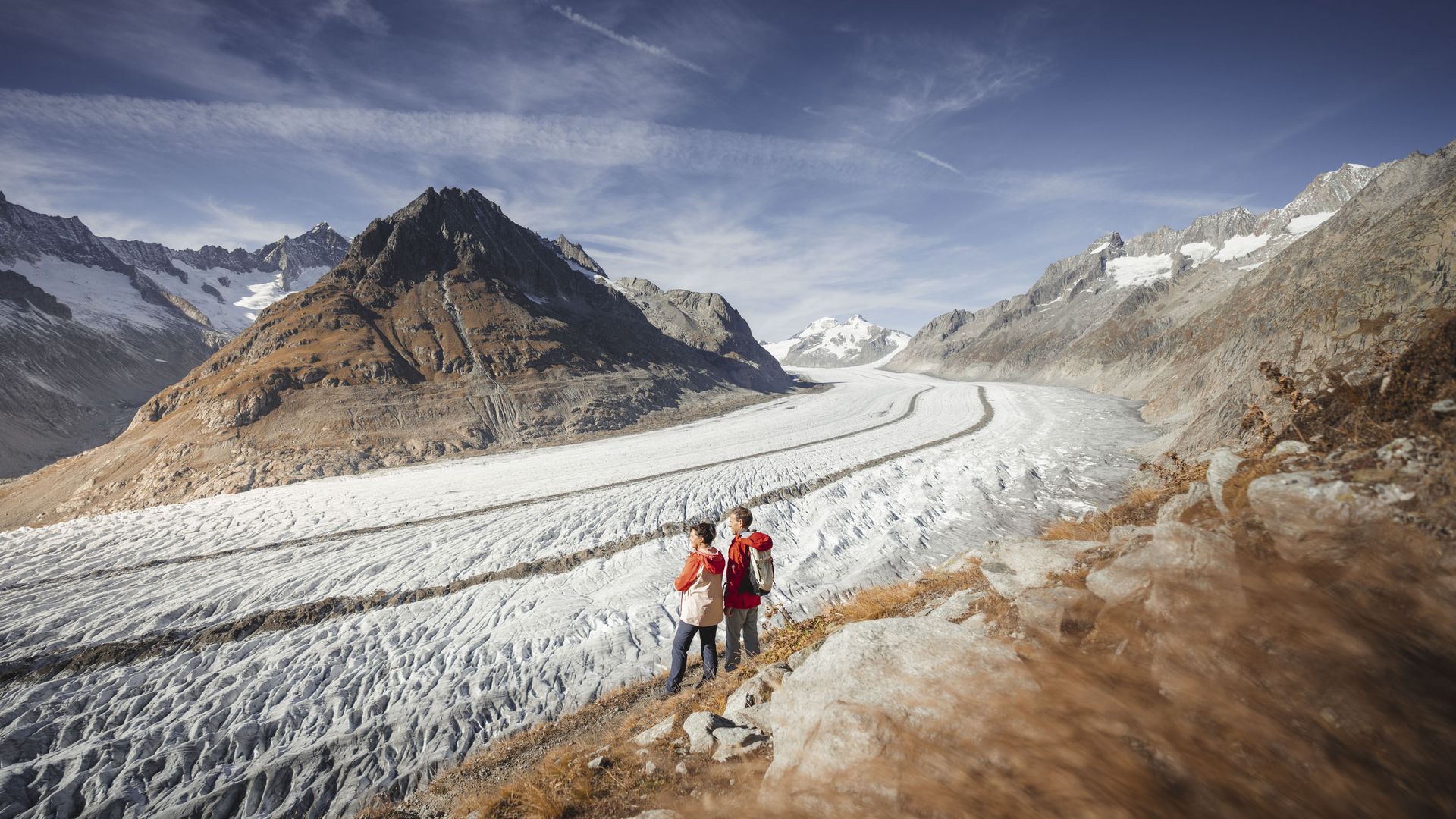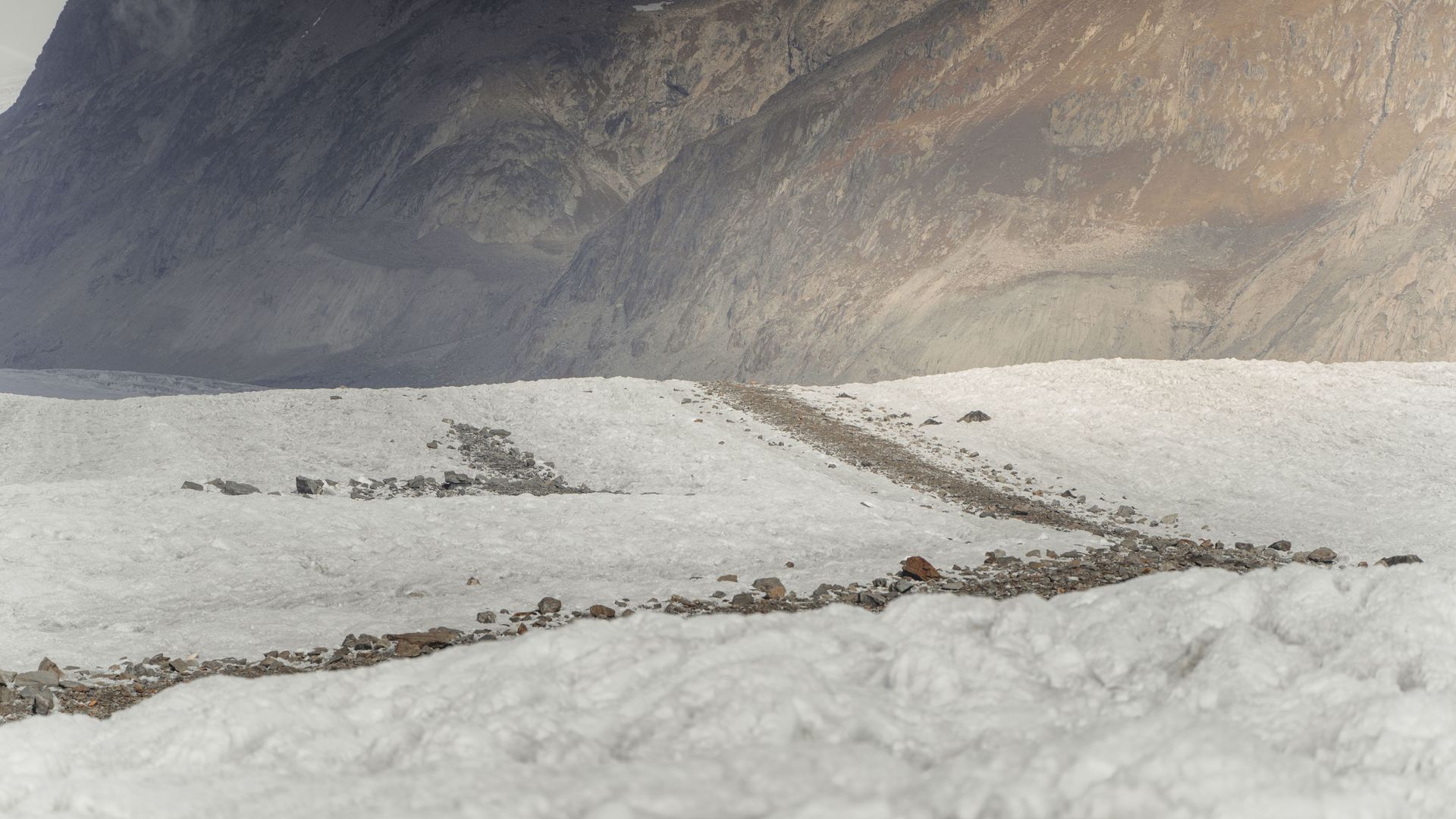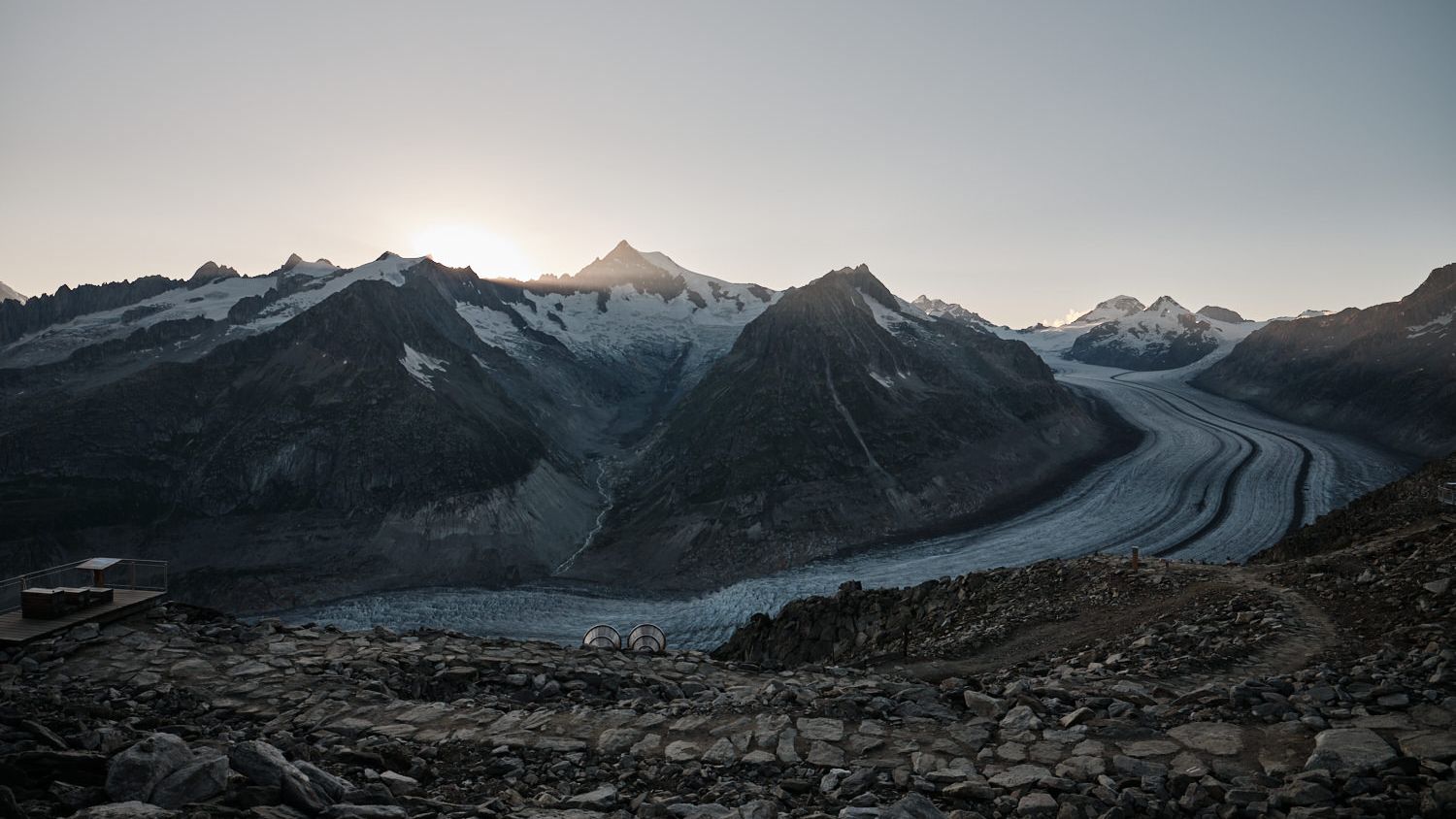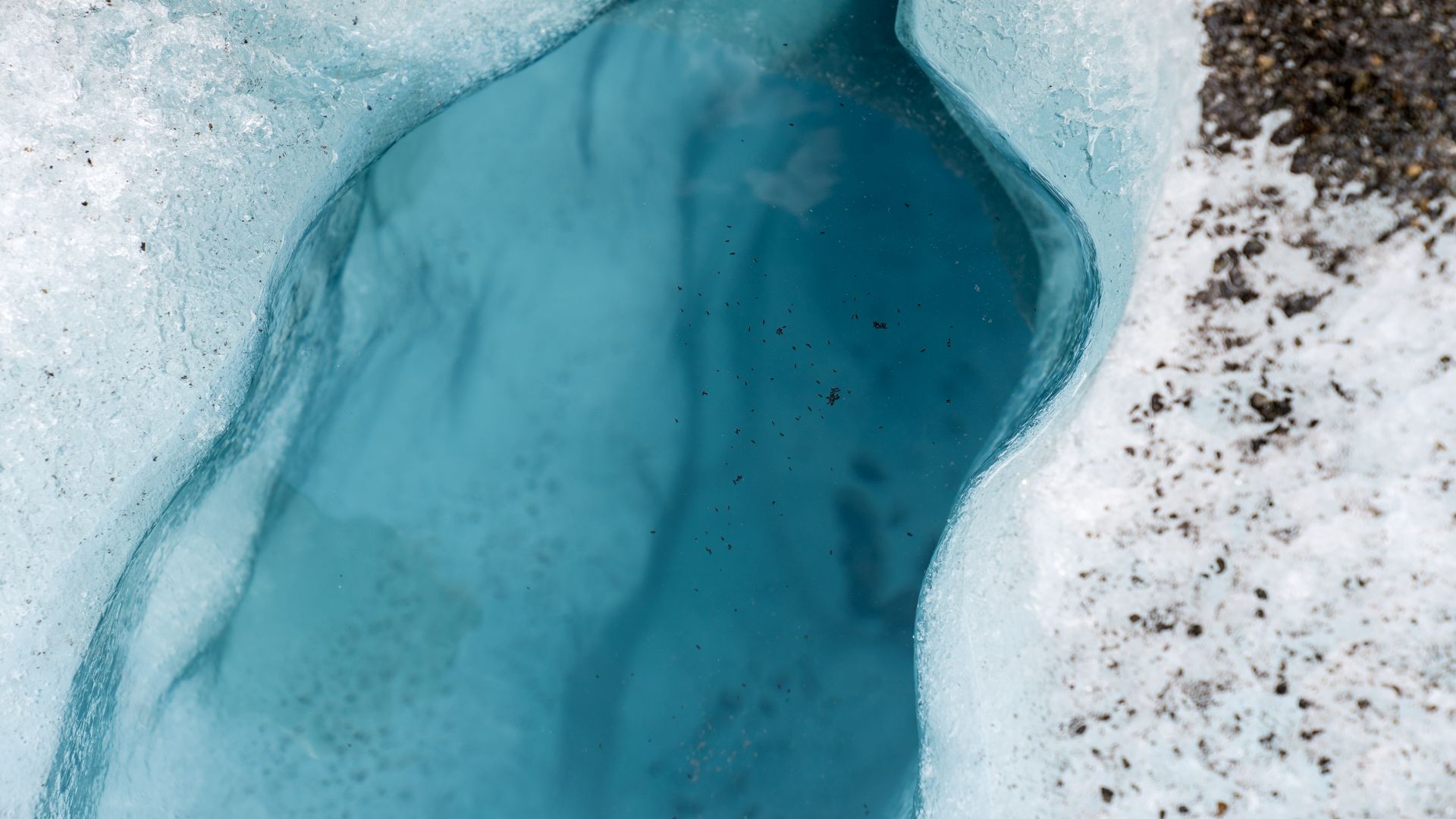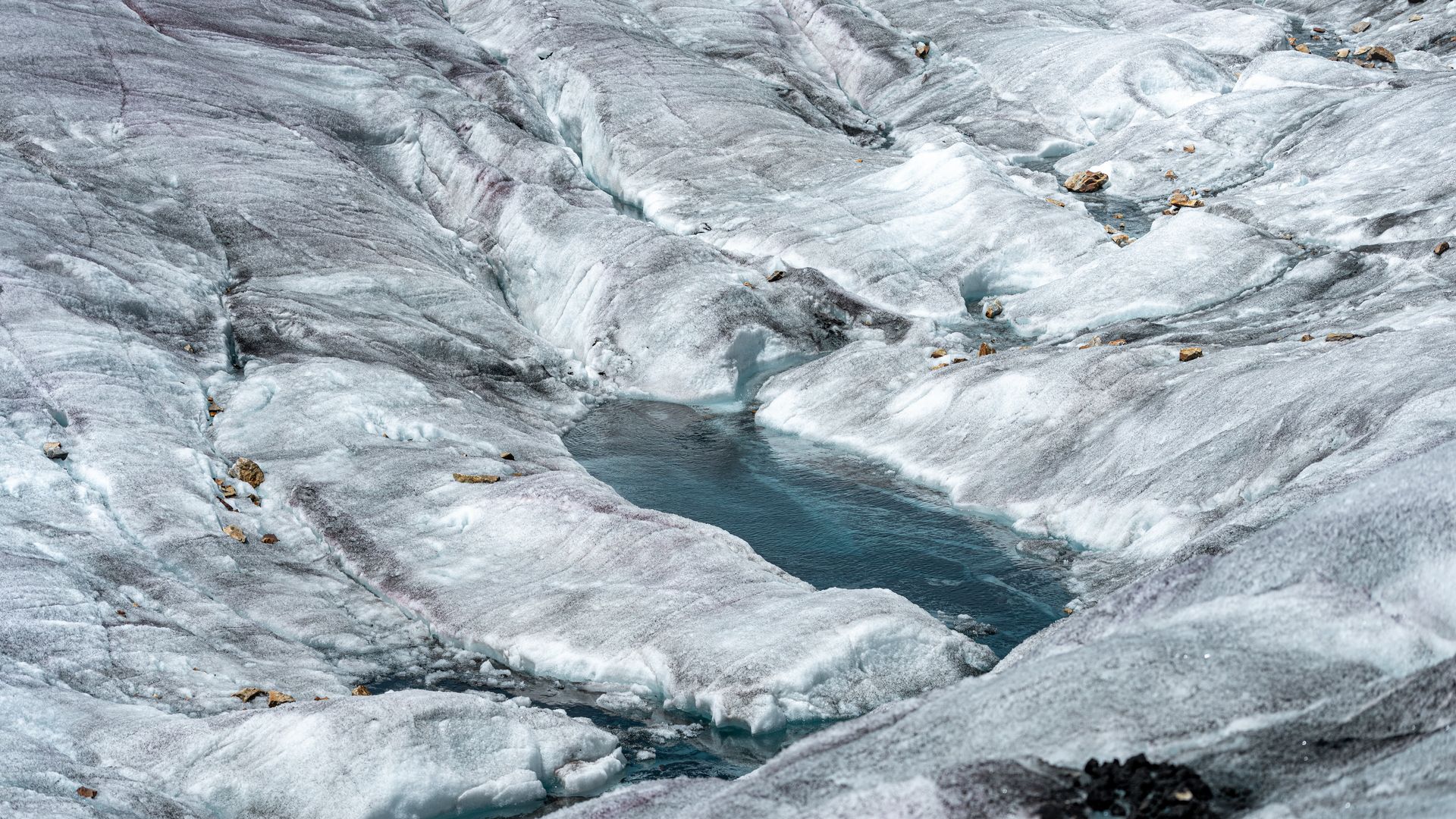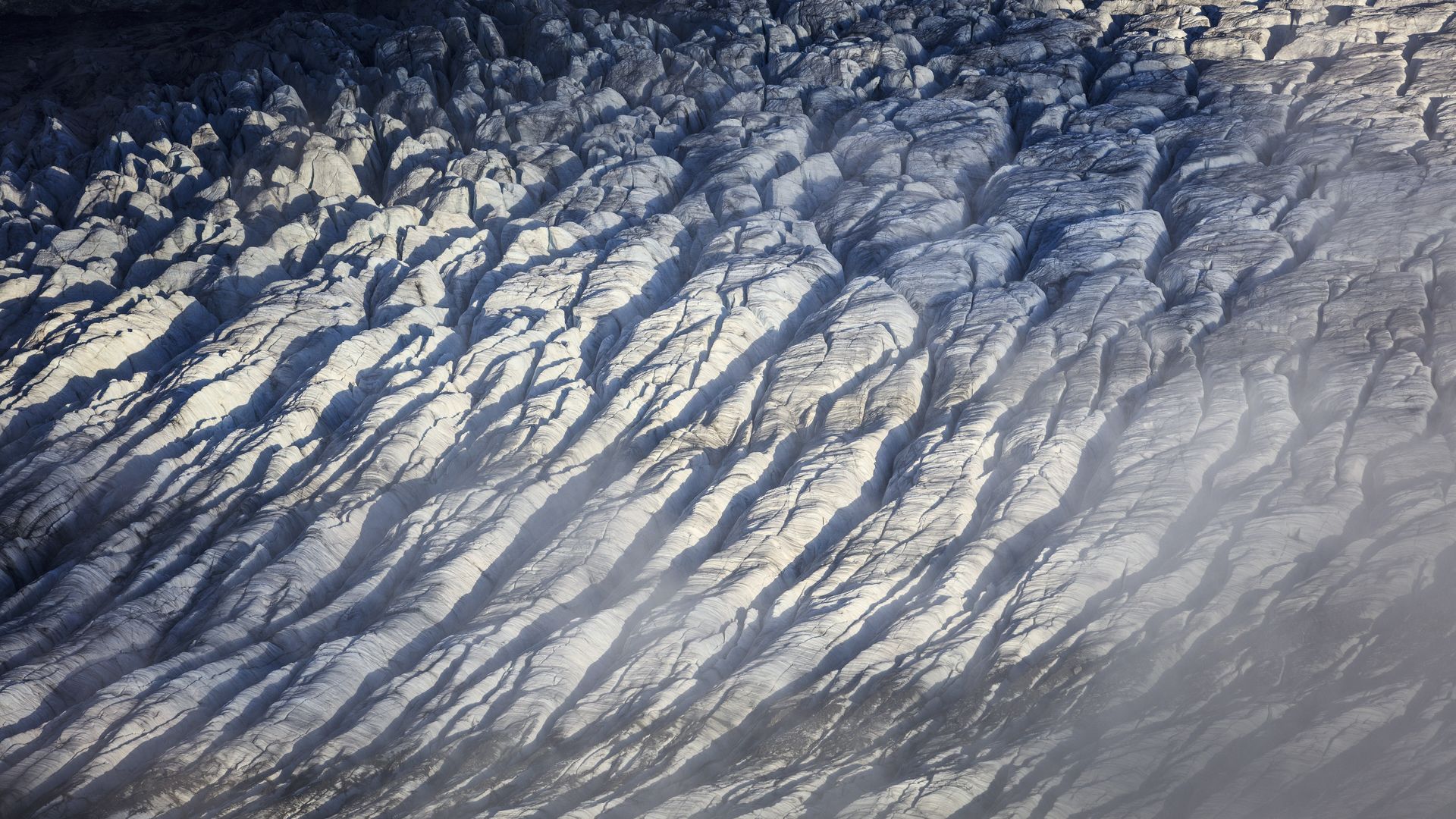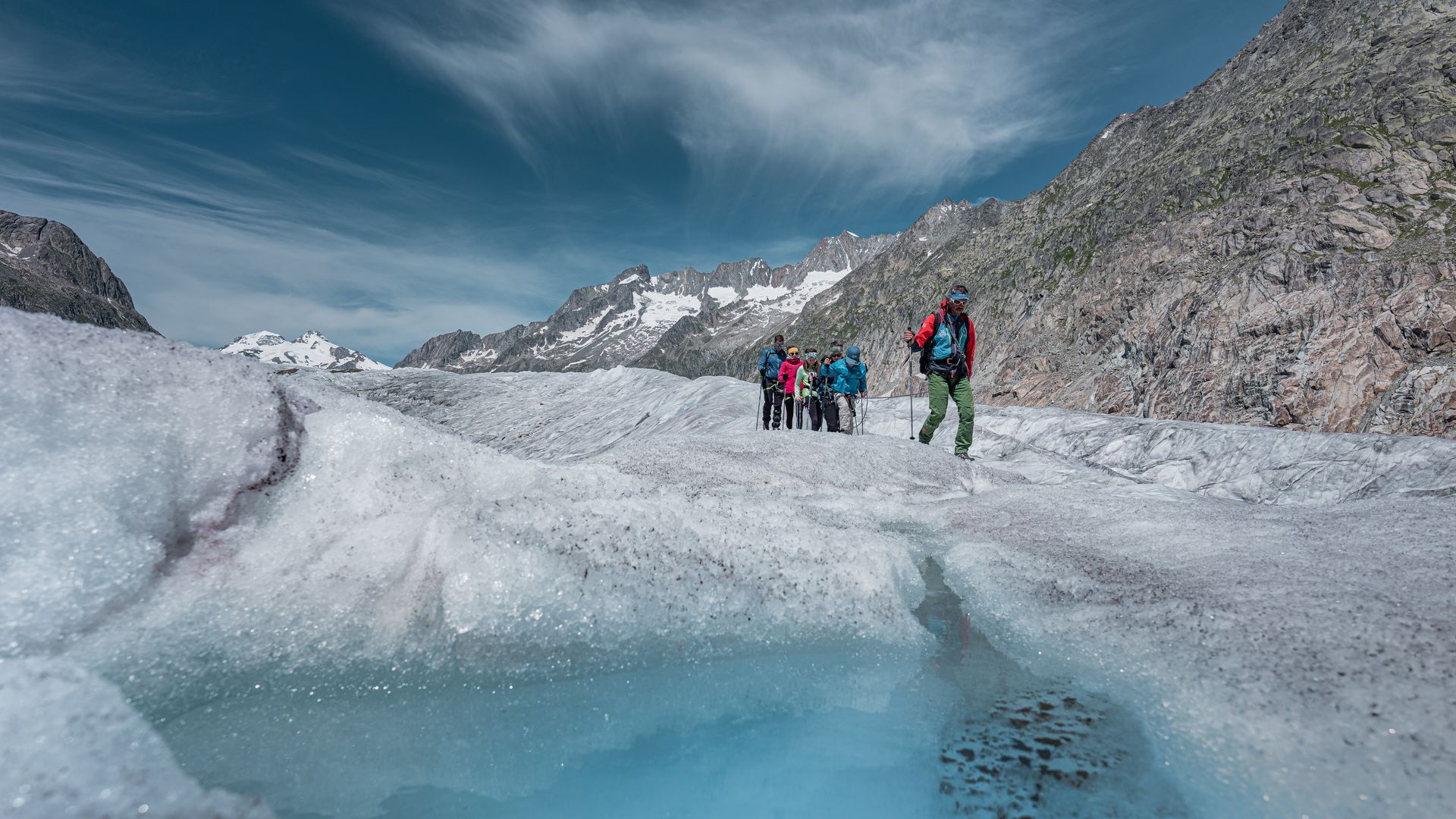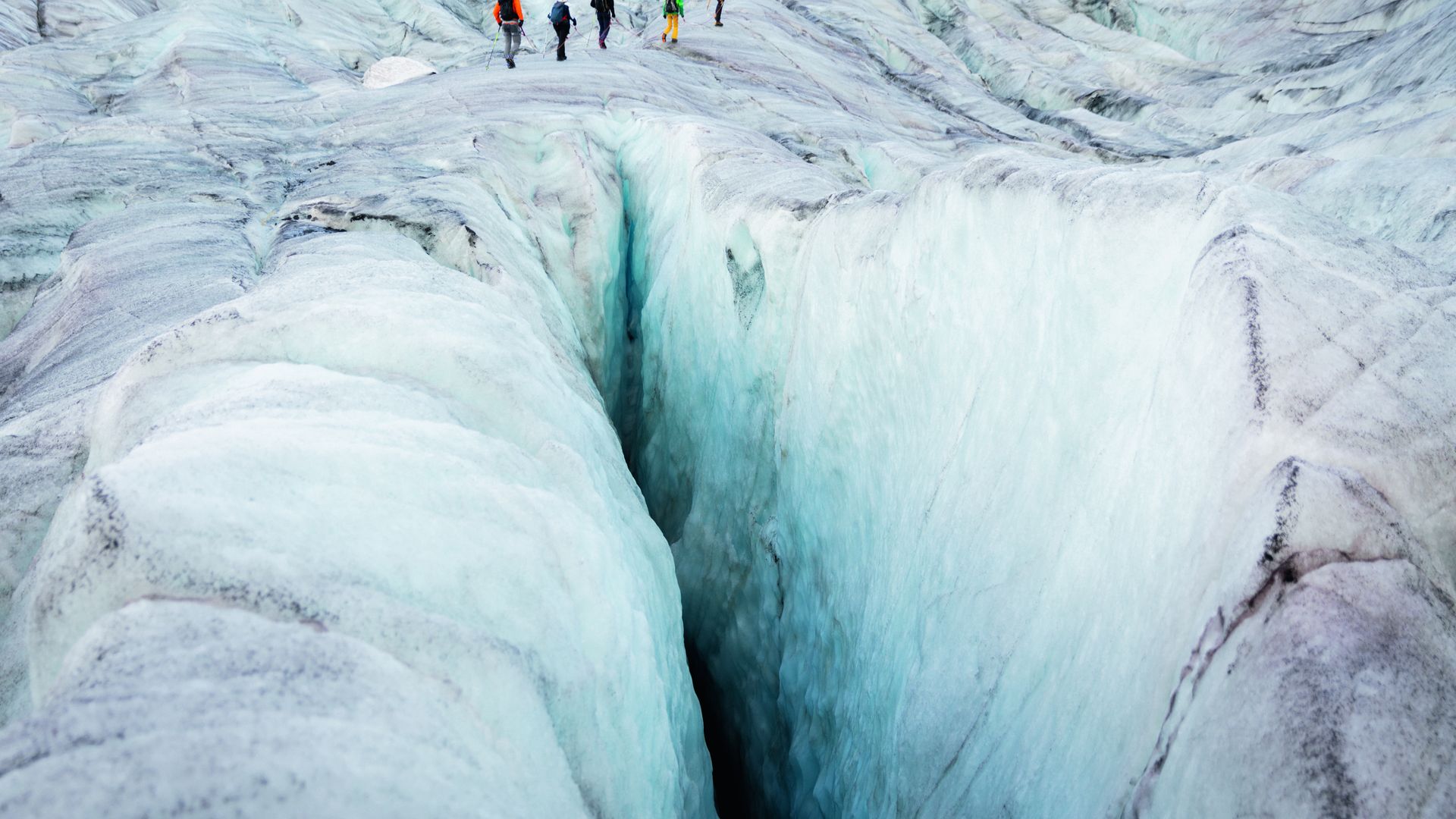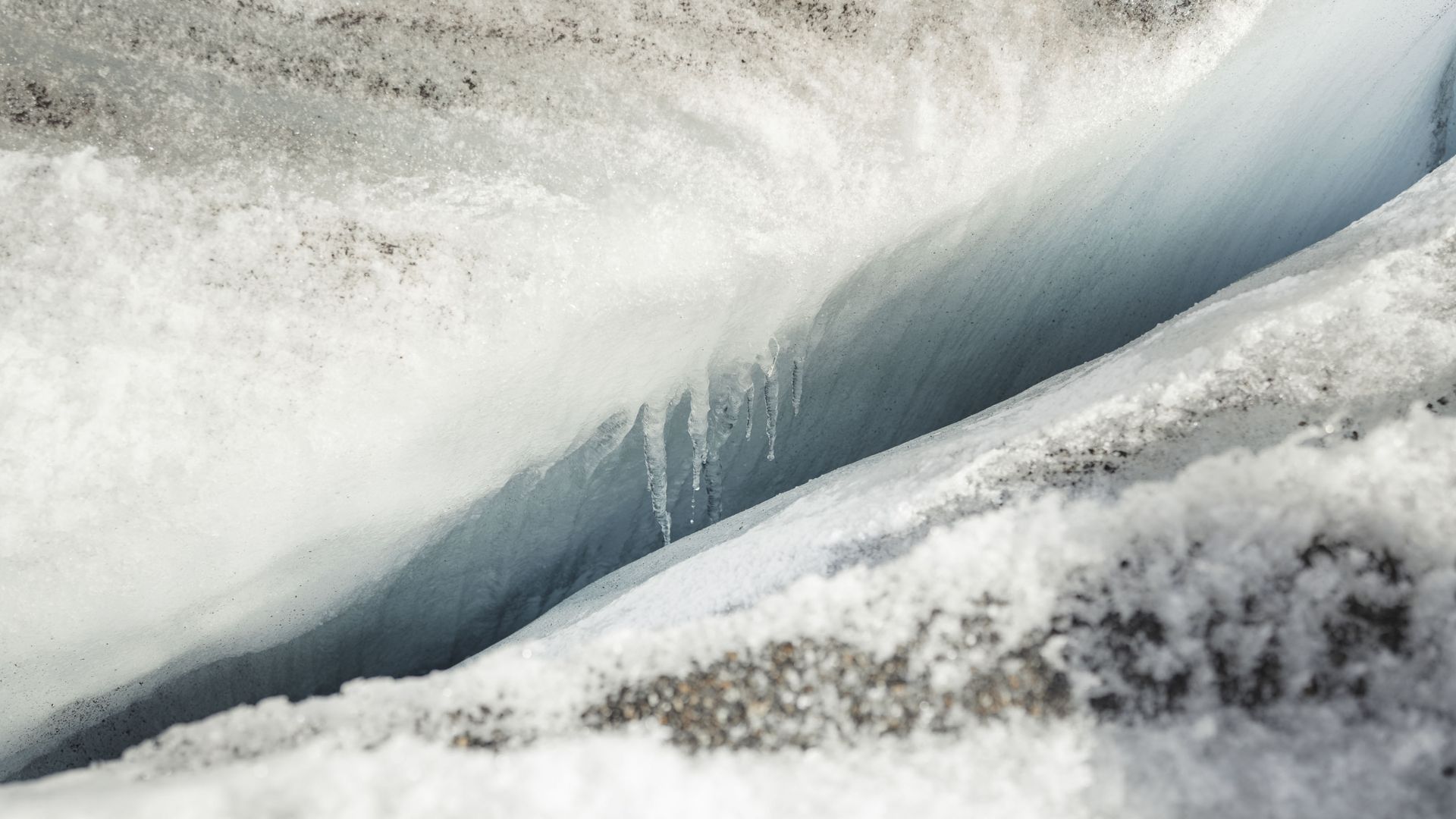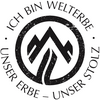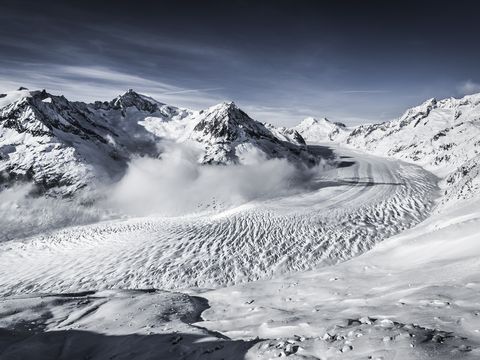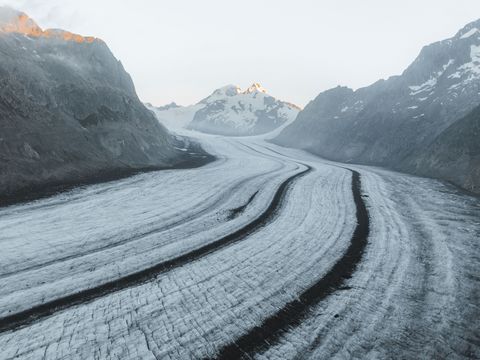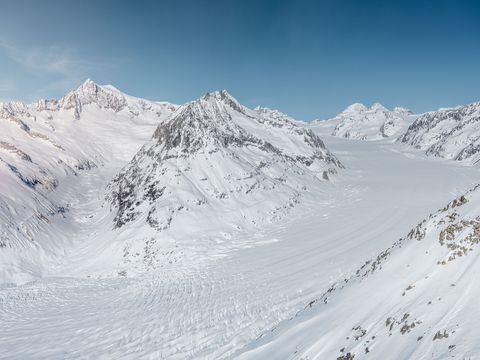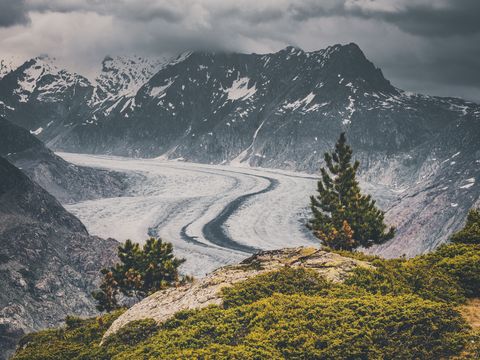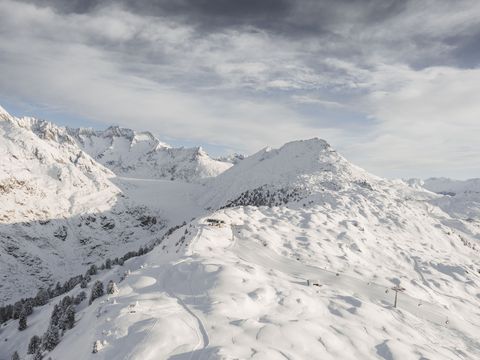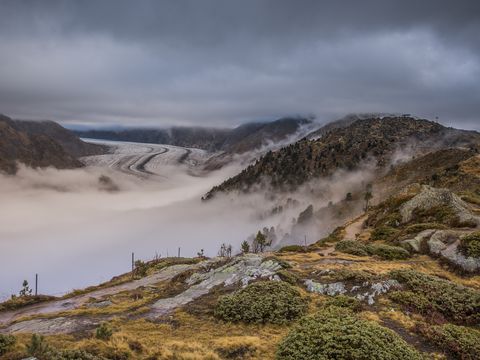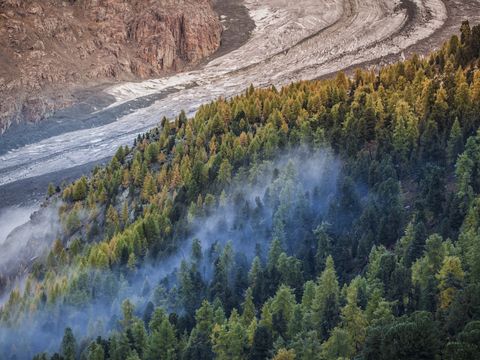The Great Aletsch Glacier has shaped the landscape of the Aletsch Arena over thousands of years. During the last ice age (around 18,000 years ago), ice still covered the mountain ridges between the Bettmerhorn and the Riederhorn; only the peaks rose above the ice. How do we know? The landscape tells us: the area that was then covered by ice is smooth and rounded, but the shapes of the Bettmerhorn and Eggishorn are sharp and jagged.
We can also trace how the Great Aletsch Glacier has grown and receded in the landscape of the Aletsch Forest. Around 11,000 years ago, the terminus of the glacier was in the Rhône Valley and the glacier's edge reached almost as far as Riederfurka. The immense lateral moraine that was formed in the process is clearly visible from the moraine trail. The maximum extension of the Great Aletsch Glacier to date was around 1860. At that time, it was around 3 km longer than it is today and the edge of the glacier was a good 200 m higher, near the Aletsch Forest. This area still stands out against the surrounding countryside as a light strip of land with fairly young vegetation.
